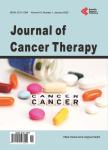
T=题名(书名、题名),A=作者(责任者),K=主题词,P=出版物名称,PU=出版社名称,O=机构(作者单位、学位授予单位、专利申请人),L=中图分类号,C=学科分类号,U=全部字段,Y=年(出版发行年、学位年度、标准发布年)
AND代表“并且”;OR代表“或者”;NOT代表“不包含”;(注意必须大写,运算符两边需空一格)
范例一:(K=图书馆学 OR K=情报学) AND A=范并思 AND Y=1982-2016
范例二:P=计算机应用与软件 AND (U=C++ OR U=Basic) NOT K=Visual AND Y=2011-2016

摘要:AIM:To design and validate broad-range 16S rRNA primers for use in high throughput sequencing to classify bacteria isolated from the human foregut ***:A foregut microbiome dataset was constructed using 16S rRNA gene sequences obtained from oral,esophageal,and gastric microbiomes produced by Sanger sequencing in previous studies represented by 219 bacterial *** primers evaluated were from the European rRNA *** assess the effect of sequence length on accuracy of classification,16S rRNA genes of various lengths were created by trimming the full length *** spanning various hypervariable regions were selected to simulate the amplicons that would be obtained using possible primer *** sequences were compared with full length 16S rRNA genes for accuracy in taxonomic classification using online software at the Ribosomal Database Project (RDP).The universality of the primer set was evaluated using the RDP 16S rRNA database which is comprised of 433 306 16S rRNA genes,represented by 36 ***:Truncation to 100 nucleotides(nt)downstream from the position corresponding to base 28 in the Escherichia coli 16S rRNA gene caused misclassification of 87(39.7%)of the 219 sequences,compared with misclassification of only 29(13.2%)sequences with truncation to 350 *** 350-nt sequence reads within various regions of the 16S rRNA gene,the reverse read of an amplicon generated using the 343F/798R primers had the least(8.2%)effect on *** comparison,truncation to 900 nt mimicking single pass Sanger reads misclassified 5.0%of the 219 *** 343F/798R amplicon accurately assigned 91.8%of the 219 sequences at the species *** by abundance of the species in the esophageal dataset,the 343F/798R amplicon yielded similar classification accuracy without a significant loss in species coverage(92%).Modification of the 343F/798R primers to 347F/803R increased their universality among foregut ***

摘要:The purpose of this review is to provide medical researchers,especially those without a bioinformatics background,with an easy-to-understand summary of the concepts and technologies used in microbiome ***,we define primary concepts such as microbiota,microbiome,and ***,we discuss study design schemes,the methods of sample size calculation,and the methods for improving the reliability of *** emphasize the importance of negative and positive controls in this ***,we discuss statistical analysis methods used in microbiome research,focusing on problems with multiple comparisons and ways to compare β-diversity between ***,we provide step-by-step pipelines for bioinformatics *** summary,the meticulous study design is a key step to obtaining meaningful results,and appropriate statistical methods are important for accurate interpretation of microbiome *** step-by-step pipelines provide researchers with insights into newly developed bioinformatics analysis methods.

摘要:Glioblastoma (GBM) is the most common primary brain malignancy in adults and has a poor prognosis despite standard of care treatment. The mainstay of GBM treatment has relied on maximum surgical resection and chemotherapy and radiation. Cancer immunotherapy has made great strides since the advent of anti-PD-1, anti-CTLA-4, and other immune checkpoint inhibitors. With the advancement of novel therapeutics, more clinical trials for patients have opened as well. An important future direction of clinical trials is the ability to identify appropriate patients to optimize treatment response and minimize toxicities. This review describes considerations in designing future GBM clinical trials in not only immunotherapy but also with other promising treatments. We will discuss factors, such as pseudoprogression, genetic and circulating biomarkers, and the commensal microbiome of patients in the setting of clinical trial design.
地址:宁波市钱湖南路8号浙江万里学院(315100)
Tel:0574-88222222
招生:0574-88222065 88222066
Email:yzb@zwu.edu.cn

